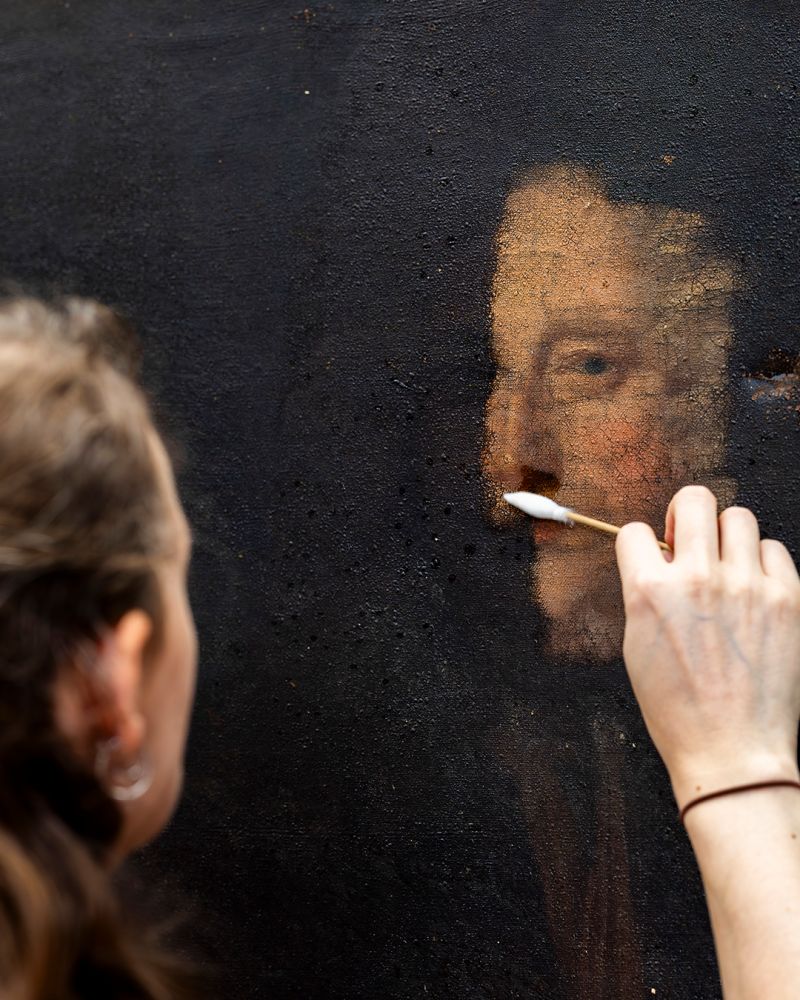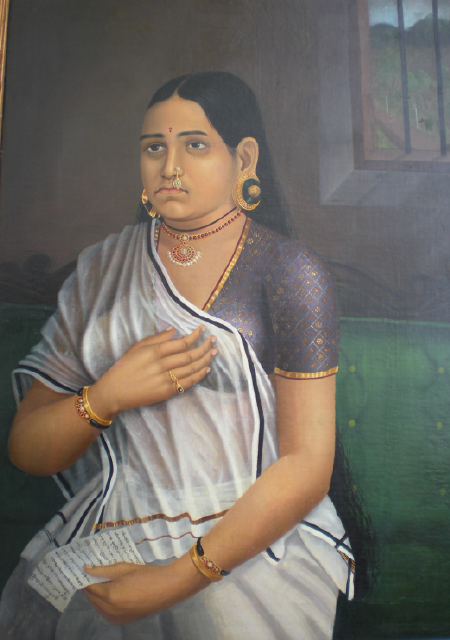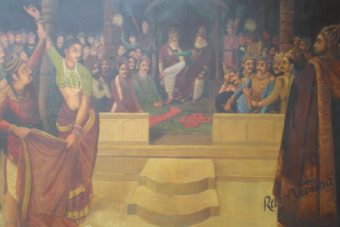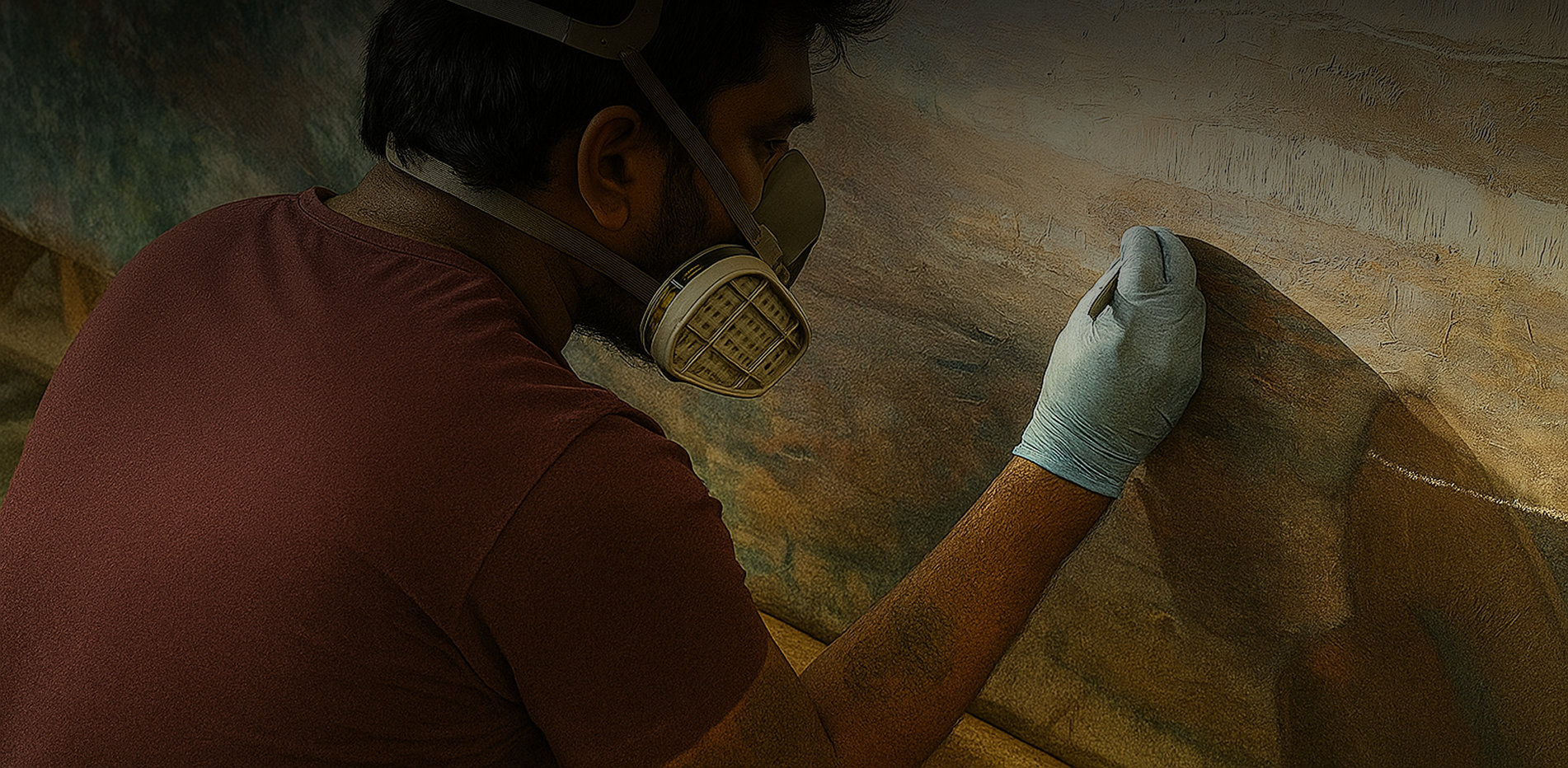
Preservation Techniques
Our preservation services aim to reduce the impact of deterioration on the objects of art whereby large-scale conservation treatments can be avoided, and the original form of the work of art can be preserved in its true form. We undertake various procedures to aid in the preservation of art like,
- Surveying and AssessingEnvironmental Exhibition Conditions
- Disaster Preparedness and Assistance
- Handling of Packing , Art Transportation and Storage
- Frames, Mounts, and Installations
- Photography and Documentation

Surveying and Assessing Environmental Aspects
Elements that come into play in the gallery environment like Light, Temperature, Humidity, Pests, and Pollutantsimpacts various underlying aspects of the object and its composition. Although initially the changes maybe invisible, over time it will result in irreversible damage.
Light is something that cannot be excluded in a gallery environment, but it is also responsible in causing damage to the art or artefact on display. Exposure to light for long periods of time can cause fading of colour, alterations in hue and other chemical and physical changes. Monuments and art objects that are displayed outside buildings also undergo changes by exposure to sunlight. Minimising the intensity of light that falls on the object, limiting the duration of exposure to light, and eliminating photo chemically active radiations from the light are few steps that can be taken to prevent damage by light sources.
Other factors such as heat and moisture are also key to deciding the condition of the objects and art forms on display. Favourable climatic conditions help in long term preservation of exhibits. If the conditions are not favourable, like high and low humidity levels, and uneven temperatures, the objects become brittle and fragile and it may also encourage the growth of micro-organisms and mould, all of which will ultimately cause severe damage to the paintings, textiles, and other three-dimensional objects. Undertaking measures such as recording humidity levels, usage of humidifiers and dehumidifiers, temperature control and constant maintenance will help reducing the extent of damage caused by moisture and heat.
Implementation of pest control techniques, detecting and eliminating damage causing pollutants like sulphate, calcium, lead and soot, will also help in ensuring the longevity of the artefacts.
Packing, Transportation and Storage
Our team provides the logistics necessary for art transportation and treatments required by them before, during and after the travel. The treatments include condition assessment and reporting of an object, their deinstallation, reinstallation, crating and packing, and proper handling and optimal storage conditions during travel, as appropriated by the proportions of the object.

We ensure you a safe travel arrangement and solution for all types of art objects. CIACH provides exclusive door-to-door art transportation services. The vehicle service includes features such as climate control, GPS tracking, and lift gates.
An expert team of our conservators will always be present. The conservator checks the object’s condition prior to the departure and post its arrival at the destination. Our conservators also oversee the de-installation and installation of the artwork.
We understand that some of the objects maybe fragile and delicate in nature, while some maybe of intrinsic value, which requires careful supervision and guidance. In scenarios where the object may need to be stored for a long period of time, CIACH also provides well maintained and regularly monitored storage solutions, tailor made for specific objects. We provide long term storage options for both single pieces of artefacts as well as entire collections. Fine art storage and storage of other artefacts and important documents provided by CIACH, is specially designed, to maintain a relative humidity of 50% ±5%and a constant temperature. We also provide HVAC system and aim at favourable storage of objects by avoiding overcrowded situations and maintaining optimal temperature conditions.
Frames, Mounts and Installation
A well-preserved piece of art will last for many generations. Heirlooms, historic paintings, priceless originals, photographs are all of such immense value that even a slight variation in their appearance is considered a catastrophic loss. Archival framing techniques ensures that a piece of art remains untouched by deterioration or damage for decades to come. If an artwork is being used for reselling purpose, framing it will protect it and prevent from the diminishing of its value.
Artwork, especially paper-based art or documents, paintings, and textiles, are susceptible to damage by exposure to elements such as light and humidity. Art or artifacts framed using low quality materials will also cause degrading of the piece of art where it comes in contact with the frame , irrespective of where and how it is stored. In some cases, the chemicals involved in the making of the artwork, like those in photographs and paintings, may react and make changes to the original structure of the artwork.
CIACH provides the clients with very fine materials for frame options including contemporaryhardwood, carved mouldings and welded aluminium. Our conservators will help you choose the right material for your art by providing their valuable suggestionsregarding the moulding options and appropriate archival materials, taking into consideration the long-term safety, aesthetic properties and reversibility of the piece of art.
Photography and Documentation
Documentation is integral to the conservation and preservation of art, which is used to document the physical aspects of an object through written and photographic data. Based on the type of the cultural or historic heritage property to be preserved and the techniques implemented for it, the method of documentation may vary. An archaeological site that requires preservation, for instance, can be documented using aerial imagery, whereas a historical painting or portrait can be documented by video documentation.

Documentation is based along three categories, that is, image, text and data. Our team performs documentation procedures following well established guidelines. Documenting is used to record the physical state of an object, which can help in determining the different stages that the object undergoes during its conservation and treatment. With the help of this method, it is also convenient to monitor the changes that occur during storage, exhibition and transit across venues and time.
We understand the importance of documentation and the role that it plays in the process of conservation, especially in the case of a catastrophic disaster that could result in extensive damage to the artifact, documentation plays a pivotal role in restoring the artifact to its former glory.
The objects obtained for treatment are properly documented before, during and after the conservation and preservation procedures are undertaken. CIACH provides film photography as well as digital documentation format.
Photography is also done for the following purposes:
- For collection assessment
- For exhibitions, catalogues, brochures, publications in media
- Examination of artworks using Ultraviolet and Infrared radiations.
By the process of documentation, a permanent record is obtained of the treatments observed and the materials and methods used to implement it. Future conservators can refer the data for assessing the condition of the object and decide on the strategy to be followed.




